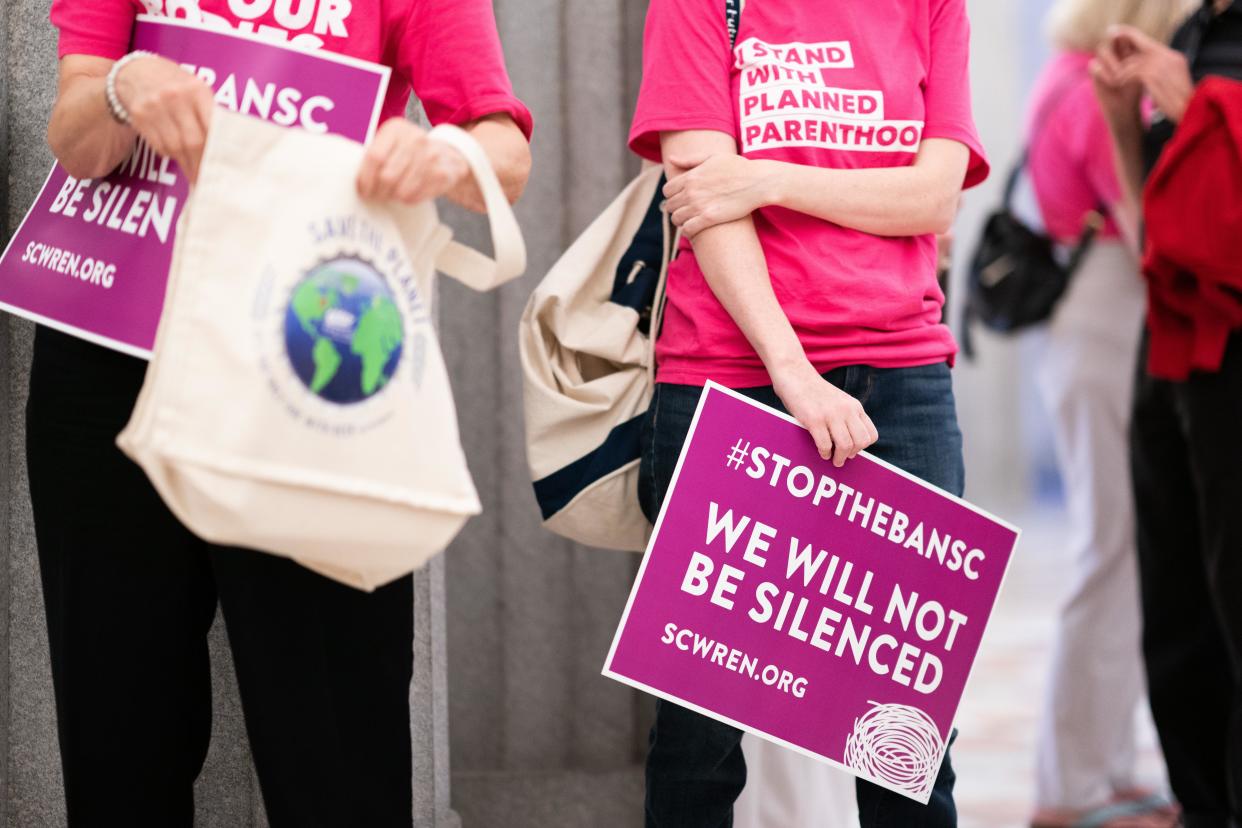The Plan to Claw Back Abortion Rights State by State Just Hit a Major Roadblock

In the aftermath of Dobbs v. Jackson Women’s Health Organization, the Supreme Court’s decision undoing abortion rights, anti-abortion groups have focused more than ever on the federal courts, and with good reason. Federal judges are extraordinarily difficult to impeach and hold lifetime appointments, and that insulates them from popular support for abortion access—and opposition to bans.
In theory, state supreme courts should be different. That, at any rate, was the story emerging from Wisconsin after April, when voters overwhelmingly chose a left-leaning candidate who ran on her support for abortion rights. State court judges could effectively be fired by voters who don’t like their decisions on abortion. All of that makes this week’s decision by the South Carolina Supreme Court even more puzzling. The court upheld a six-week abortion ban virtually identical to one struck down earlier this year by the same court. To make the optics even better, the judges to do it were all cisgender men. So how can we make sense of what happened in South Carolina, and what does it teach us about struggles over state supreme courts in the post-Dobbs era?
This week’s decision doesn’t change the importance of state supreme courts—or undermine their promise to groups chipping away at Dobbs. That’s not only because many state supreme court judges are elected.
So are state legislators and governors, and in plenty of red states, those political actors have doubled down on their support for sweeping abortion bans, even when polls indicate that those laws are unpopular—and even when voters have sided with abortion rights in ballot initiatives.
But state supreme court races can be different. To begin with, some of them aren’t partisan, which makes it easier for voters to set aside political tribalism for abortion preferences. And voters may likely identify supreme court judges with their decisions on especially salient issues—abortion chief among them—in a way that isn’t true of legislators or governors dealing with a wider range of high-profile issues. As important, some state constitutions have more-robust traditions on privacy, autonomy, or equality that might make it easier to anchor an argument for abortion rights than was the case in federal law.
But the South Carolina decision is a story about the limits of state supreme courts as well as their promise. South Carolina has a capacious privacy right in its state constitutional tradition, and it was for that reason that the state supreme court struck down a six-week ban in a 3–2 decision this January. The decision was not absolute—it stressed that reproductive rights “must be balanced against the state’s interest in protecting unborn life.”
The state reintroduced the law, with three new provisions, including one stating that emergency contraception was not covered by the ban. Lawyers for the state then argued that South Carolina had struck a good-faith balance this time between the interests of pregnant people and those of the fetus: Abortion seekers had a meaningful chance to terminate a pregnancy before six weeks. And even if they didn’t have a chance (and they may not, given that the earliest someone can confirm a pregnancy is two weeks before the ban kicks in), the state argued, it didn’t matter. Patients could just take emergency contraceptives to prevent a pregnancy.
What was new, of course, was not these arguments—implausible as they may seem—but the judges hearing them. The only female justice on the court, Kaye Hearn, retired after the January decision, and the South Carolina Legislature replaced her with a man who joined this week’s majority decision. The four justices who voted to uphold South Carolina’s law were clearly not afraid of political repercussions, even if a majority of South Carolinians oppose a six-week ban.
That’s because some state supreme courts are as insulated from political consequences as the federal judiciary. South Carolina Supreme Court judges are “elected” by the state Legislature to serve 10-year terms; the Legislature can then decide whether to give a judge extra terms on the bench. That means that South Carolina judges have to worry more about pleasing partisan state lawmakers than voters.
State legislators, in turn, bank on the fact that deep-red states like South Carolina will prioritize antipathy for Democrats—or lawmakers’ votes on other issues—over their views on abortion. That gamble seems to have paid off so far: In conservative states that voted for abortion rights in ballot initiatives, conservative lawmakers retained or even expanded their majorities.
South Carolina is not the only place this could happen. In 11 other states, elections play no part in the selection of state supreme court justices.
The court’s decision will have far-reaching effects outside state lines. Prior to the ruling, abortion in South Carolina had been legal up to 22 weeks. The state was a regional outlier in the South, and that meant that patients from neighboring states could travel there to access abortion once their own state imposed a criminal law. Not anymore. It won’t be easy to override partisan judges or legislators either. South Carolina is one of 24 states that don’t have a voter-driven initiative and referendum process. (Only legislators can put ballot measures before voters.)
In states like South Carolina, then, what strategy can abortion-rights supporters pursue? They can appeal to a long tradition of nonenforcement of abortion laws. Taxpayers, and especially fiscal conservatives, may be less happy paying for expensive abortion investigations and prosecutions than they would be making symbolic statements about fetal life or abortion. Abortion-rights supporters can also work across state lines, fighting to expand access in neighboring jurisdictions with different rules on judicial elections or ballot initiatives. Ultimately, though, decisions like this one are a reminder of the importance of a nationwide strategy to dismantle Dobbs. As crucial as state supreme courts will be in the next chapter of the abortion wars, the protections they create will likely only ever go so far.

